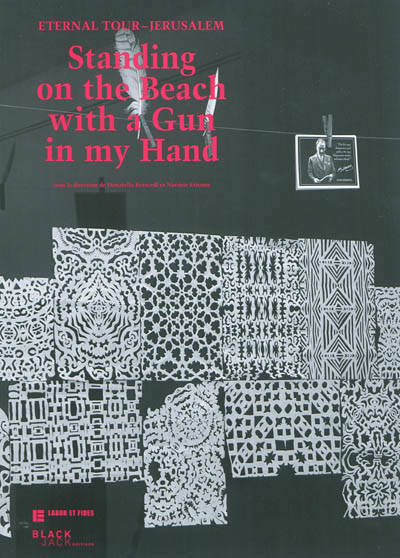
- Afhalen na 1 uur in een winkel met voorraad
- Gratis thuislevering in België vanaf € 30
- Ruim aanbod met 7 miljoen producten
- Afhalen na 1 uur in een winkel met voorraad
- Gratis thuislevering in België vanaf € 30
- Ruim aanbod met 7 miljoen producten
Omschrijving
Comment investir un présent qui nous semble hoqueter ? L'une des pistes : travailler la notion d'écart, réaffirmer les espaces, les singularités pour reposer les termes d'un dialogue avec nos histoires, nos savoirs, nos pratiques. Tel est l'enjeu de cet ouvrage collectif en noir et blanc. Jérusalem y apparaît comme la cristallisation des écarts de langues, de territoires, de civilisations, d'identités, d'histoires et de représentations. Elle figure une partie de notre histoire européenne.
Le livre se construit autour d'archives, d'essais, de textes littéraires, d'analyses iconographiques ou encore d'entretiens. De la même manière, l'iconographie est hybride. Plus d'une trentaine d'auteurs, universitaires, écrivains, journalistes, artistes, occidentaux et moyen-orientaux, participent à cette publication.
How can one invest a present that seems to sputter ? One possible way : to work on the notion of the interval, to reassert the spaces and the peculiarities so as to reassert the terms of a dialog with our histories, knowledge and practices. Such are the stakes of this black & white collective work. Here Jerusalem appears as the crystallization of the gap between languages, territories, civilizations, identities, histories and representations. It addresses a part of our European history.
The book is built around archived texts, essays, literary texts, iconographic analyses and interviews. Likewise, the iconography itself is a hybrid. Over thirty authors, scholars, writers, journalists, artists, Westerners and Middle Easterners took part in this publication.
Specificaties
Betrokkenen
- Auteur(s):
- Uitgeverij:
Inhoud
- Aantal bladzijden:
- 256
- Taal:
- Frans, Arabisch, Engels
Eigenschappen
- Productcode (EAN):
- 9782918063193
- Verschijningsdatum:
- 9/02/2012
- Uitvoering:
- Paperback
- Afmetingen:
- 200 mm x 280 mm
- Gewicht:
- 500 g

Alleen bij Standaard Boekhandel
Beoordelingen
We publiceren alleen reviews die voldoen aan de voorwaarden voor reviews. Bekijk onze voorwaarden voor reviews.











